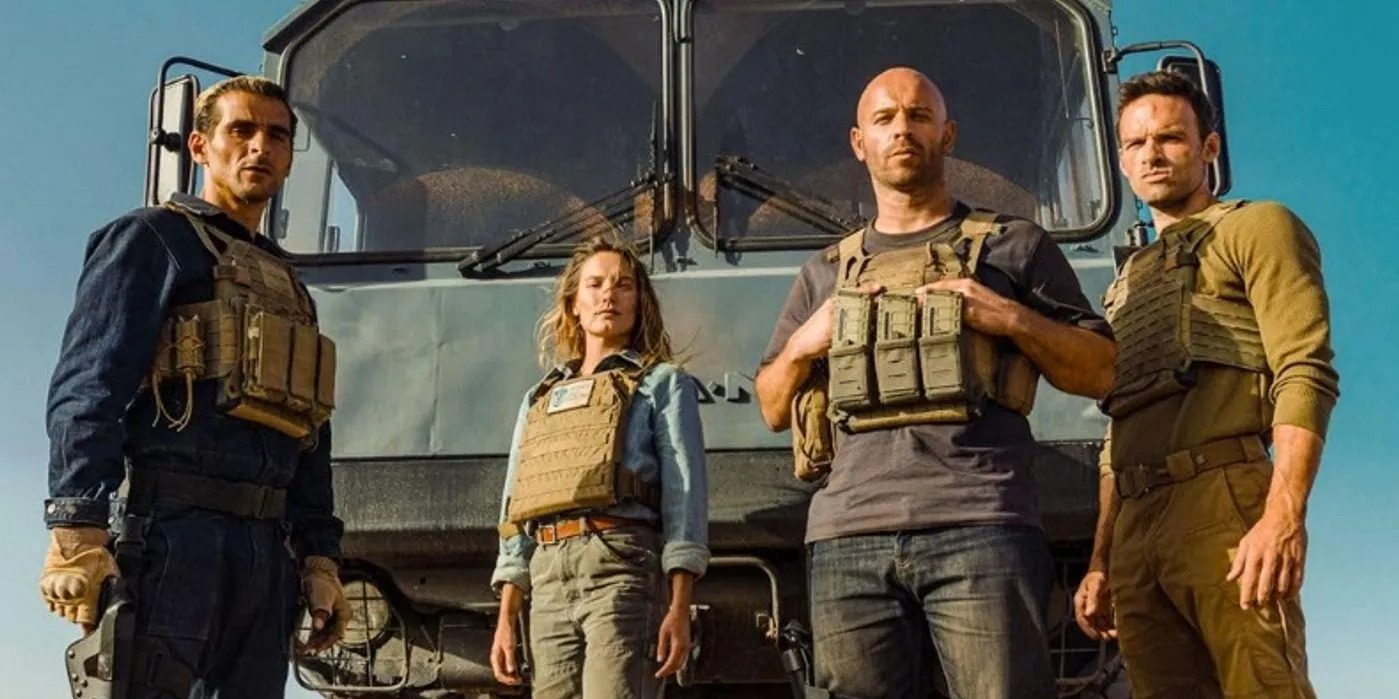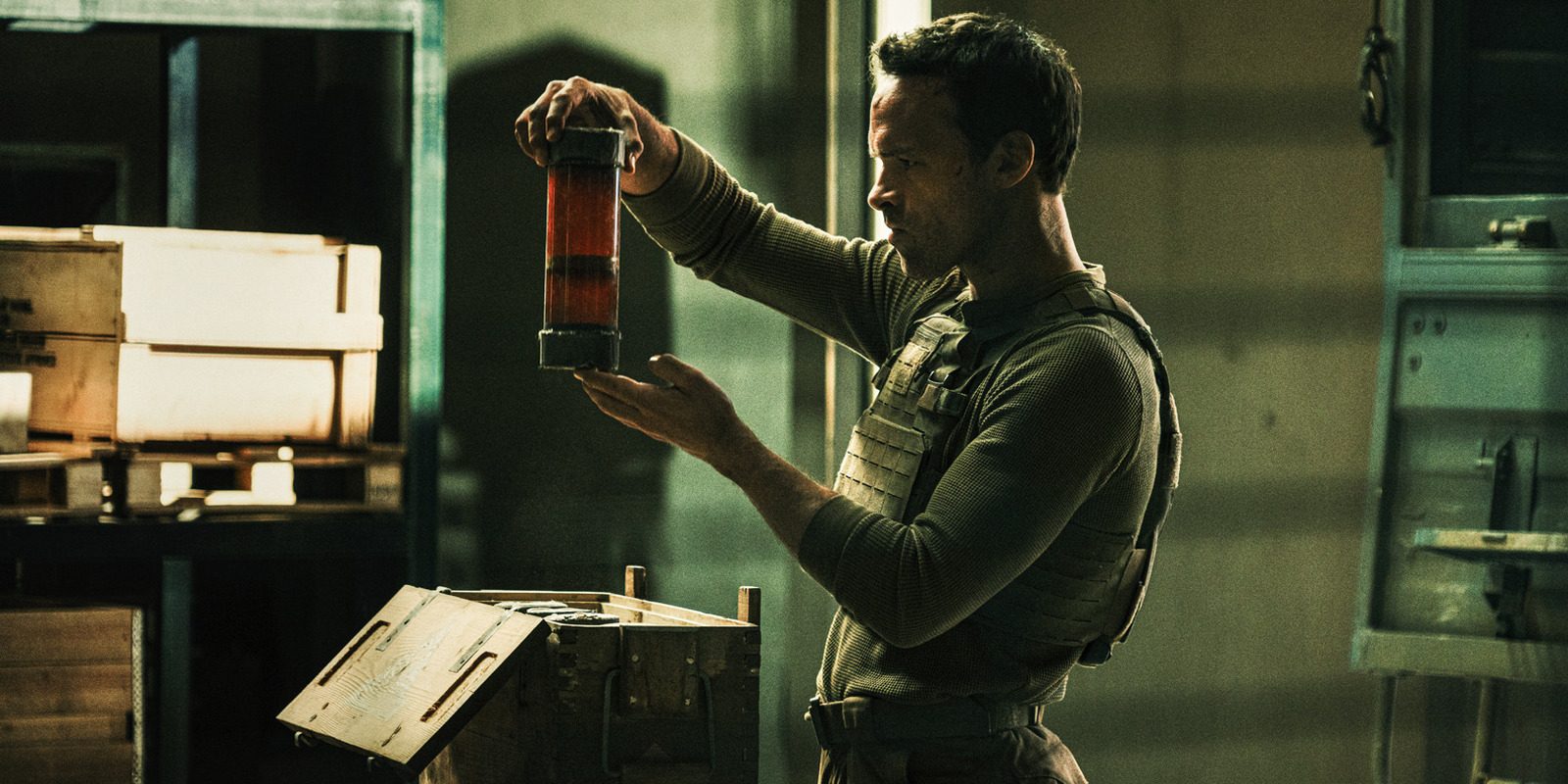Netflix’s ‘The Wages of Fear’ is a thoroughly captivating movie that keeps its audience on the edge of their seats throughout. Directed by Julien Leclercq, it unfolds in a remote and nondescript village in Latin America, where a sparse population resides. The primary source of employment for the villagers lies with an oil company, offering one of the few prospects for work in the area. When a fire breaks out at the oil field, the company urgently requires individuals to drive two trucks loaded with highly volatile nitroglycerine through a perilous route in the desert to extinguish the blaze.
Due to the inherent dangers, this operation is undertaken covertly due to its extreme risks. Seizing the chance to earn enough money to escape their predicament, four people from different European countries stranded in the village volunteer for the task. The heart-pounding French thriller adventure that ensues makes for a gripping film that prompts speculation about its potential basis on any true story.
The Real Political Backdrop of The Wages of Fear
‘The Wages of Fear’ is a remake of the 1953 timeless French classic film directed and co-written by Henri-Georges Clouzot. Renowned for its tense atmosphere, gripping plot, and masterful direction, the 1953 version has left an indelible mark on the thriller genre. Its themes of desperation, moral ambiguity, and the human psyche under extreme pressure continue to resonate with audiences, cementing its relevance decades after its release.

In an interview, Julien Leclercq disclosed that his approach to remaking the film was never about replicating every character and scene from the original. Despite being a fan of the original, influenced by his father’s admiration for it, Leclercq acknowledged the necessity of adapting to modern moral standards and societal norms. Recognizing that certain aspects of the original film might not resonate with contemporary audiences, particularly concerning gender representation, he emphasized the need to reconstruct female roles and build the characters on his own.
The 1953 film is based on George Arnaud’s novel of the same name and is not inspired by any true events. Arnaud set his characters in Guatemala but Clouzot changed the location of his film to a fictitious village in an unspecified country in Latin America. This was done with the intent to make a social commentary about the presence of US corporations in Latin American countries. This was also one of the major reasons why the film was not properly advertised and screened in the US at the time of its release.
During the 1950s and 1960s, multinational corporations, particularly those from the United States, engaged in widespread exploitation of labor in Latin America. These conglomerates, often referred to as “banana republics” for their dominance in industries such as fruit production, mining, and oil, wielded immense economic and political power in the region. They capitalized on lax labor laws, weak governmental oversight, and sometimes even direct intervention to extract maximum profit at the expense of local workers.
Many of these corporations employed tactics such as low wages, long hours, unsafe working conditions, and suppression of labor movements to maintain control and maximize their returns. This exploitation not only led to economic disparities and social injustices within Latin American countries but also contributed to broader patterns of neocolonialism and dependency on foreign powers.
The film masterfully evokes a palpable sense of dread through its cinematography, particularly in its depiction of the real Latin American desert landscape. The vast and desolate expanses of the desert, captured in hauntingly beautiful shots, serve as a metaphorical canvas for the characters’ perilous journey. The harsh, unforgiving terrain, with its scorching heat and endless stretches of sand, becomes a character in itself, intensifying the tension and foreboding that permeates the film.
‘The Wages of Fear’ has ingrained itself so deeply in the public consciousness that its characters and universe exude a sense of authenticity, despite being entirely fictional. While not directly based on real-life individuals, they resonate with audiences by reflecting on the struggles and dilemmas faced by many in similar circumstances. The perilous situations and difficult choices confronted by the characters parallel the harsh realities experienced by those leading such precarious lives.
Read More: Netflix’s The Wages of Fear: Exploring All Filming Locations


You must be logged in to post a comment.